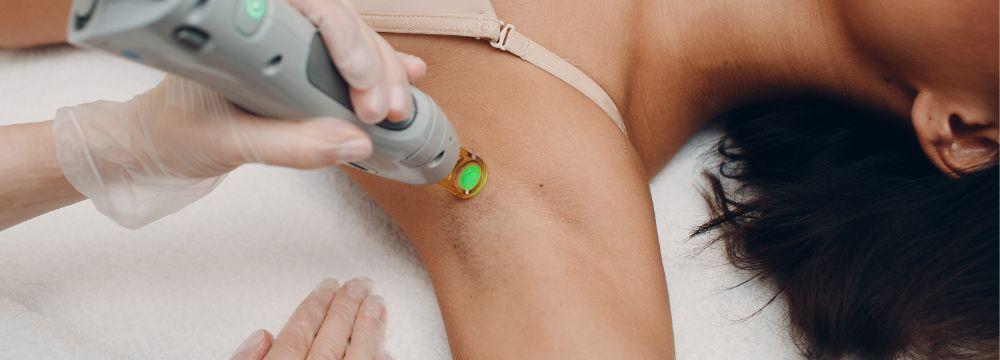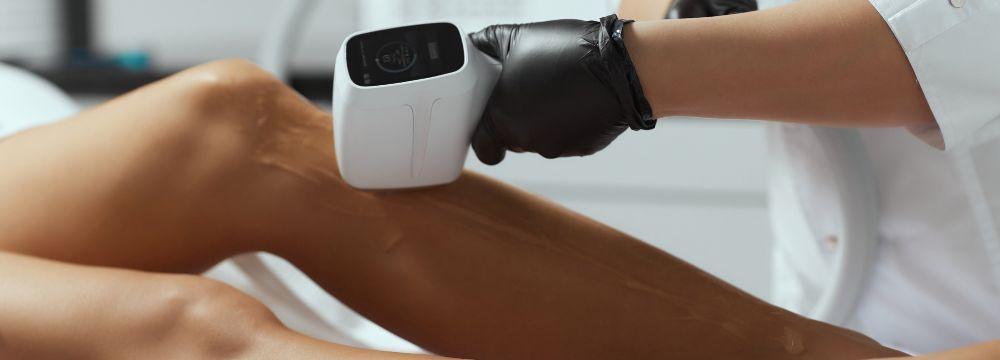Understanding How the Sun Can Do Damage Beneath the Visible Skin
UV or ultraviolet damage occurs when our skin gets exposed to sunlight, especially during the most intense hours at midday and in the summer. UV light encompasses a narrow portion of the electromagnetic spectrum between visible light and x-rays, up to about 380nm. This causes skin issues because of damage to cells and the possibility of mutating the skin’s DNA itself. While DNA damage is irreversible, cellular damage to the skin may eventually turn over and can be reversed in some situations.
UV damage can cause wrinkles, hyperpigmentation, lentigo or brown spots, and skin cancer. And this photodamage may take years before the problems are even visible. So, it’s important to see your dermatologist before you see visible sunspots.
Two distinct types of UV light are dangerous to the skin, representing different portions of the spectrum. UVA and UVB present risks to the skin, although they have somewhat different effects. That’s why we always recommend using broad-spectrum sunscreens, clothing, and sunglasses that block both types of UV.
Blocking UV Rays
So, how does UV do this kind of damage? And how can you prevent this damage from occurring? More UVA filters through the atmosphere and reaches our skin than UVB. However, both can cause significant damage. The most important thing to know about UV light is that it can be blocked with sunscreen. Physical barrier sunscreens effectively block UV, while chemical sunscreens work well to absorb UV rays. Physical sunscreens (our preferred type) typically combine Zinc Oxide and Titanium Dioxide. Zinc Oxide blocks all kinds of UV well, while Titanium Dioxide is best at blocking UVB. They do this by absorbing the UV light and preventing it from penetrating the skin surface. By combining the two minerals, we can obtain what’s known as “broad spectrum” UV protection. Chemical sunscreens are also effective at preventing UV damage but may be better at blocking UVB.
How Damage Occurs
The mechanism responsible for the damage caused by UV light is radiation delivered in waves, which can penetrate from the uppermost skin layers or the epidermis down to the deeper layers, where collagen and blood vessels are located. The UV waves penetrate the skin in a depth-dependent fashion, where shorter waves penetrate superficially, while longer waves radiate the deeper layers. UVA is responsible for causing wrinkles, premature aging, and invisible damage that may not be noticeable for years. UVB rays typically are responsible for causing sunburns and, thereby, are the main culprit for skin cancer.
Another way to think about protection from UV radiation is the UV index. It is a 15-point scale indicating how intense the UV is and how quickly you could get a sunburn. The lower end of the scale, such as 1-2, shows a low UV index or minimal amounts of radiation. This could take up to an hour to cause a sunburn. A moderate UV index is 5-6; you may get sunburn after 30 minutes. A high UV index is above 10, and sunburn is imminent in at least ten minutes. These time frames depend heavily on skin color, with lighter, more fair skin burning quickly than darker, more pigmented skin types.
Polarized Light Photography
Another fascinating aspect of UV damage to the skin is our ability to visualize the more profound pigment formation in lighter skin types using UV or polarized light photography. When visible white light is reflected off the skin and back to the camera, we can’t see the damage because the reflection contains all the colors in the light spectrum. But when all the visible light is filtered, and only UV light is used, it is possible to visualize deeper where the hidden pigment begins forming- in the dermal layers. Using this technique, a photograph can show the future distribution of sun damage, even before it is visible to the human eye. Another strategy for visualizing pigment uses cross-polarized light and filtration of the colors in the image. Both approaches can provide documentation of skin pigment and an early warning for those who get excess UV exposure.
DNA Damage
Remember, the more UV exposure we subject our skin to, the greater the risk of DNA damage. Cancer can develop as the cells attempt to repair themselves after UV damage and healthy cells mutate. The mutated cell cannot be fixed; instead of being destroyed, it replicates. The replication process begins with skin cancer formation and eventually may form a tumor that has to be surgically removed.
The Bottom Line
Protect your skin from direct sunlight, as UV damage will nearly always result in trouble down the road. Protection with sunscreen is vital, seeking shade, using UV clothing, and wearing hats and sunglasses. Even our eyes need UV protection! We hope this article has shown you that UV damage may not be readily apparent. It begins to build below the skin’s surface, remaining invisible for years or even decades. Eventually, UV-damaged skin comes to the surface, and it takes significant therapeutic interventions to improve or reverse it. Ultimately, we firmly believe that an ounce of prevention is worth a pound of cure, which is no different with your skin.
To schedule a consultation with one of our dermatologists, contact us.




